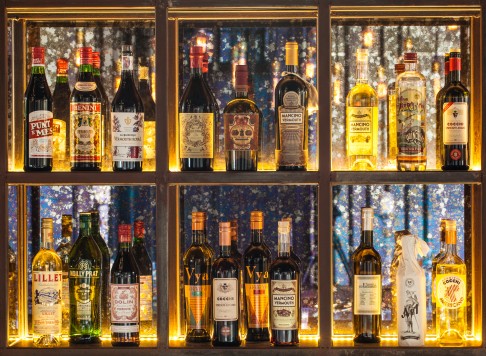
Vermouth’s new golden age, in Hong Kong at least
The fortified wine - to many just an ingredient of a dry martini - is a versatile drink that, in the right hands, can be a revelation. It has a champion in Hong Kong's Pirata Italian restaurant
Hong Kong is a cautious adopter of the latest fashions in drinking, so when co-owner Manuel Palacio claims that the bar of his Pirata Italian restaurant in Wan Chai is the city’s only vermuteria, it’s a safe bet that it will remain as such for some time to come.
For many people, vermouth is merely a minor ingredient in a dry martini – a dispensable one if there is none to hand.
So little of it is used that in some bars a bottle can last for months, or even years, which is one reason, Palacio says, that the drink has an image problem.
“At the end of the day, vermouth is a fortified wine and after a certain number of days it starts losing its properties. It doesn’t get oxidised like wine, but it loses its aroma and its main characteristics,” he says, adding that an opened bottle needs to be refrigerated.
Properly looked after, he insists, vermouth can be a revelation.
“It can be enjoyed in many forms. There are vermouths that go very well with ice, some that are best neat, some you might want to enjoy chilled, and others at room temperature,” he says.
Vermouth can be served as an aperitif or a digestif, with food, or in cocktails.

After years of neglect outside France and Italy it is becoming a fashionable drink in London’s hippest cocktail bars, which as was the case with the gin and tonic revival, appear to be following a Spanish lead.
“I’m from Spain and my partner in the restaurant [Christian Talpo] is from Italy, and the country right now that is the number one importer of vermouth is Spain,” says Palacio. “We were looking for something that makes sense for both of us. It is a beautiful aperitif and its something to which we wanted to pay tribute.”
Aromatised wines with some resemblance to modern vermouth have existed in Europe for centuries. By the mid-17th century, wine from Piedmont with wormwood as an ingredient had become popular in England and was known as “vermouth”, a corruption of the German word for the plant, “wermut”.
In France and Italy, both of which made the wines, it became popular as an aperitif, and later played a role in many classic cocktails including the martini, Manhattan and negroni.
We’re not vermouth experts. We have just drunk more vermouth than anyone else.
Vermouth can be red or white, dry or sweet. The best known producers are probably Cinzano and Martini & Rossi – both from Talpo’s home town, Turin – and Noilly Prat and Dolin from France, but there are many more.
Having decided that vermouth would be a signature offering at Pirata, Palacio and Talpo set out to make a serious study of vermouth.
“There is so little written about vermouth, but so much to be discovered,” says Palacio.
The bar carries vermouths from Italy, France, Spain, the US, and Australia. Among his own favourites is Cocchi Amaro di Torino “that is a little bit bitter and a vermouth that will last for 60 to 70 days after opening”. I tried one and found it a very effective appetite sharpener.
Cocktails are a Pirata speciality, and refreshingly, the bartenders do not attempt to reinvent the wheel.
“Our cocktails have been designed around vermouth. We are focused on classic cocktails and we like to do them to perfection, using the best ingredients money can buy, the best glassware we can find, and the most beautiful ice.
“I found the perfect dry martini six or seven years ago in a bar in Barcelona called the Dry Martini Bar, owned by a good friend of mine. I contacted him and asked if he could give us this recipe and let us know the glasses he was using to replicate this cocktail, under his name, as a tribute,” Palacio explains.
You could try this one at home. The recipe is seven parts Bombay Sapphire gin to one part Noilly Prat dry vermouth, garnished with an olive.
Palacio says that future editions of the drinks list will contain tasting notes for the vermouths to help customers make better informed choices.
“We’re not vermouth experts,” he says. “We have just drunk more vermouth than anyone else.”

